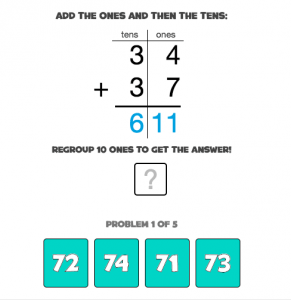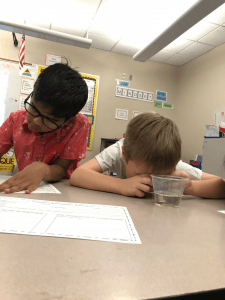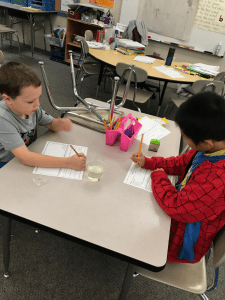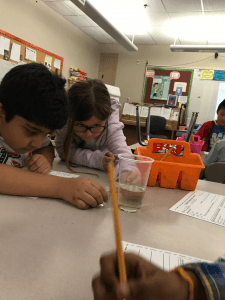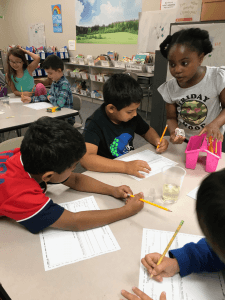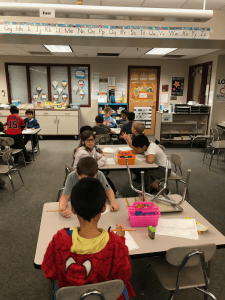Posted by kavery508 | Posted in Uncategorized | Posted on October 1, 2018
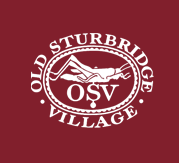 Permission slips are coming home today for our field trip! Please return it at your earliest convenience. Checks should be made out to FSS Student Activity Fund. Chaperones who have already contacted me should send payment for both parent and child. I will send home further information for chaperones just before our trip. Because there is an extended holiday weekend coming, payment will be accepted until next Tuesday.
Permission slips are coming home today for our field trip! Please return it at your earliest convenience. Checks should be made out to FSS Student Activity Fund. Chaperones who have already contacted me should send payment for both parent and child. I will send home further information for chaperones just before our trip. Because there is an extended holiday weekend coming, payment will be accepted until next Tuesday.
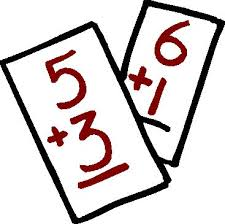 Math facts practice begins this week! Our first quiz will be this Thursday, since there is no school Friday.
Math facts practice begins this week! Our first quiz will be this Thursday, since there is no school Friday.
Coming home today is 1) a cover letter with explanations and suggestions for nightly homework practice, along with your child’s level 2) your child’s placement test 3) math fact cards at your child’s level, and 4) two practice quizzes. Please don’t return any of these. I recommend at least 5 minutes per night for practice, since practicing for 20 minutes one night per week just won’t help kids retain the information.
Quizzes are given on Fridays and returned on Mondays. The timed aspect of these quizzes tends to be the hardest thing to master. You can make additional quizzes by using the websites Math Fact Café (addition and subtraction) and Math Aids (multiplication and division). You can also make fancier flash cards at A+ Math Fact Flashcard Maker. All three websites can be found under the “Parent Resources” section above. For those of you who enjoy practicing facts using Xtramath.org, account information and passwords will be sent home next week.
Students will be encouraged and praised for making progress toward the eventual goal of achieving math fact fluency to 10 by trimester one’s end; to 15 by the end of trimester 2; and to 20 by trimester 3 (report card expectations). Students who pass 20 will move on to multiplication, then division.
 In the classroom this week, students will be learning the fine points of regrouping when adding, across the ones and tens (think 264+ 158). They will be working with base ten blocks to model the process and show understanding. They will be showing it another way by drawing base ten pictures (squares for hundreds, etc., like on homework). And they will finally learn to write the “1” over the tens or hundreds column when regrouping–what we used to call “carrying”.
In the classroom this week, students will be learning the fine points of regrouping when adding, across the ones and tens (think 264+ 158). They will be working with base ten blocks to model the process and show understanding. They will be showing it another way by drawing base ten pictures (squares for hundreds, etc., like on homework). And they will finally learn to write the “1” over the tens or hundreds column when regrouping–what we used to call “carrying”.
The difference between how we learned it years ago and how it’s taught today is that we’re making sure students have a real sense of the numbers involved and what the process of regrouping is really all about. In your homework packet in the center I have included a step by step picture guide so you can help your child at home if they need it (see Chapter 2). Whether they do or not, it’s always wise to ask them questions: How many hundreds/tens/ones are in that number? Will you need to regroup? How do you know? Does your answer make sense? Could you prove it another way?
A great way to practice regrouping in the 10s and 1s is to play Funny Numbers at Greg Tang Math. Click on the picture above. Choose “Base 10” , then the operation “+“. Notice in the example above: 11 is one 10 and one 1; we regroup by combining the six 10s and the one 10, for a total of 71.
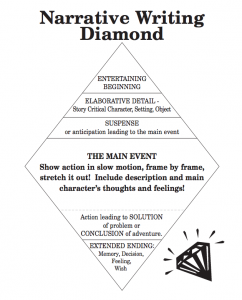 This week in writing, students will learn about the qualities of good personal narratives. This is one of 4 genres that will be our focus this year, across Shrewsbury. Good personal narratives are about one moment in time, with the action stretched out and description thrown in to put readers in the picture. We will learn to generate topics to write about, and how to find the “story seed”–the small moment that should serve as the basis for the main event. As an analogy, we encourage students to think about a watermelon. The melon is your big idea, for example, My Vacation. A slice of the melon is your narrowed focus, for example, My Day at the Magic Kingdom. But the story seed, the one event that should comprise your story, would be one thing that you did there, for example, Going on Splash Mountain.
This week in writing, students will learn about the qualities of good personal narratives. This is one of 4 genres that will be our focus this year, across Shrewsbury. Good personal narratives are about one moment in time, with the action stretched out and description thrown in to put readers in the picture. We will learn to generate topics to write about, and how to find the “story seed”–the small moment that should serve as the basis for the main event. As an analogy, we encourage students to think about a watermelon. The melon is your big idea, for example, My Vacation. A slice of the melon is your narrowed focus, for example, My Day at the Magic Kingdom. But the story seed, the one event that should comprise your story, would be one thing that you did there, for example, Going on Splash Mountain.
Here are some pictures of us in action, learning to make scientific observations of frogs in various stages of their life cycles!

